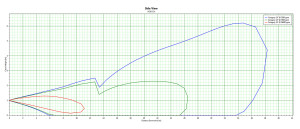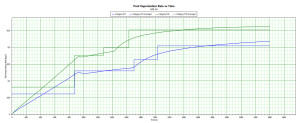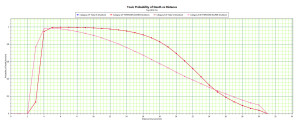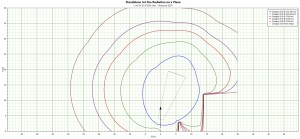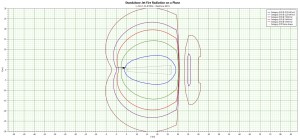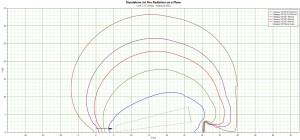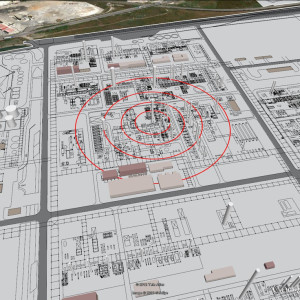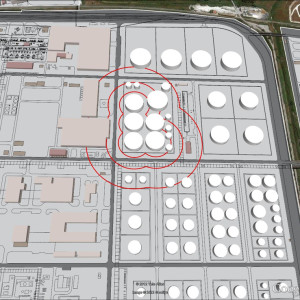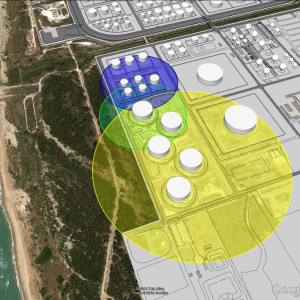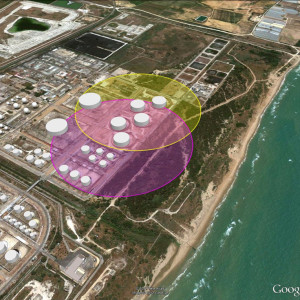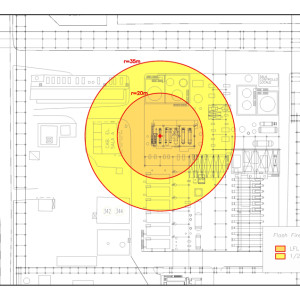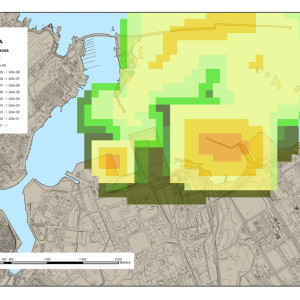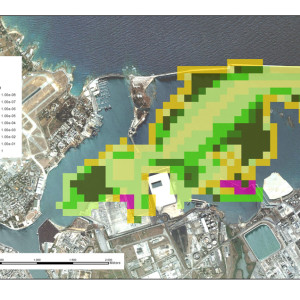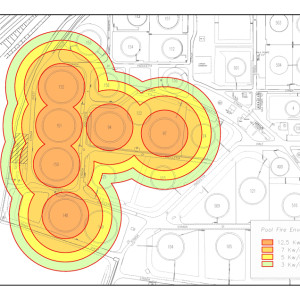Consequences Analysis
Consequence analysis is carried on to evaluate the extent of the possible consequences associated to a top-event. To learn about Eidos risk acceptance and integration methods please refer to industrial safety.
Eidos has a complete set of instrument to evaluate all the possible scenarios (events) arising from a top-event (pool-fire, jet-fire, flash-fire, UVCE, VCE, BLEVE, Fireball, dispersion, etc.)
Eidos has also tuned up specific model for more “exotic” scenarios like:
- Production of missiles made of ductile material due to explosions and their effects on people, buildings and equipments
- Production of debris made of brittle material due to explosions and their effects on people, buildings and equipments
- Consequences coming from seismic waves (screening method developed with Politecnico di Torino University)
- Consequences of spills of dangerous substances on ground waters
- Effects on buildings from explosion blasts
- Domino effects arising from heat radiations, explosion blasts and missile productions. Eidos has developed two different sets of model for screening or detailed evaluation.
Usually these exotic scenarios are not contained inside a single plant and are related to site-wide consequences, please refer to Industrial safety Consequences analysis.
Eidos is licensed to DNV Phast Multicomponent with the new radiation shielding extension.
Eidos employs skilled personnel on GIS (ArcInfo) and CAD (Autodesk) to produce consequence plots.
In recent years Google Earth is becoming more and more popular. This, and the fact that it is free, leads the Authorities to ask for Consequences representation to be supplied in kmz format (the native format of Google Earth application). Eidos extended its knowledge on GIS/CAD to include the capability of preparing kmz consequences representations fully geo-referenced and in 3D as showcased in the picture below.

